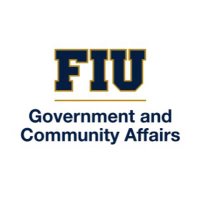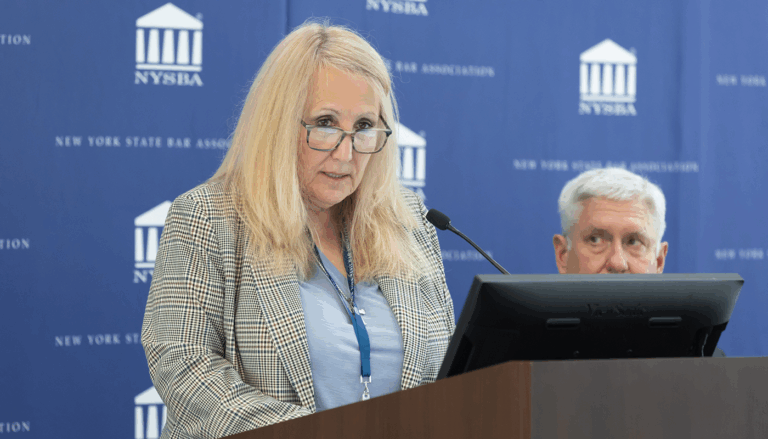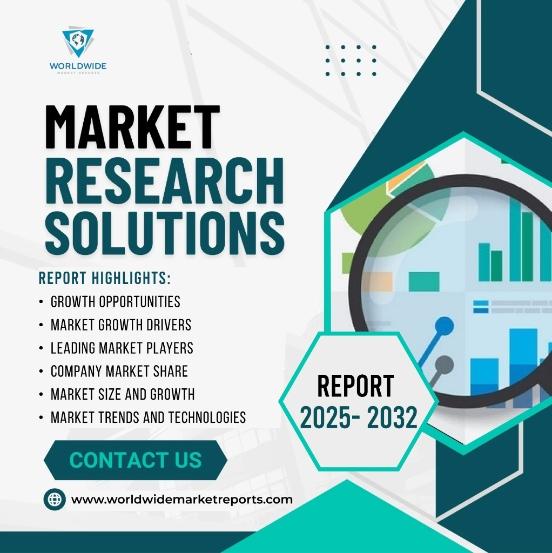Panthers in charge of tech public policy for Meta give career advice – FIU News

Executive Report: Meta and Florida International University Collaboration
A Strategic Engagement Advancing Sustainable Development Goals
A recent engagement between executives from Meta and students at Florida International University (FIU) served as a practical application of several key United Nations Sustainable Development Goals (SDGs). The event, a lunch-and-learn presentation at the Steven J. Green School of International & Public Affairs, featured FIU alumni Alexandra Uriarte, Meta Public Policy Manager, and Pedro Pavón, Meta Global Policy Director of Data and AI Monetization. The discussion focused on the intersection of technology, public policy, and career development, providing a framework for advancing SDG 4 (Quality Education), SDG 8 (Decent Work and Economic Growth), SDG 9 (Industry, Innovation, and Infrastructure), and SDG 16 (Peace, Justice, and Strong Institutions) through strategic partnerships (SDG 17).
Fostering Innovation and Responsible Infrastructure (SDG 9)
The core of the presentation centered on the principles of responsible innovation and the development of sustainable technological infrastructure, directly aligning with the objectives of SDG 9. The Meta executives detailed the political and regulatory frameworks necessary to support technological advancement while ensuring equitable access.
Key Areas of Discussion
- The Future of Artificial Intelligence: Analysis of AI’s trajectory and its impact on industry and society.
- Data Privacy and Policy: A critical examination of the policies governing data privacy. The development of the Ray-Ban Meta sunglasses was used as a case study, where privacy-by-design principles, such as an indicator light during recording, were implemented to align the product with public policy and ethical considerations.
- Technology Regulation: A dialogue on creating effective regulatory environments that foster innovation without compromising public safety or fundamental rights.
Promoting Quality Education and Pathways to Decent Work (SDG 4 & SDG 8)
The event provided a significant contribution to SDG 4 by offering students quality, relevant learning opportunities beyond the traditional curriculum. It also supported SDG 8 by equipping students with the knowledge and network to pursue decent work and achieve economic mobility.
Career Development and Economic Empowerment
- Embrace Non-Linear Career Paths: Executives stressed the value of gaining diverse work experiences, encouraging students to seek roles outside their direct field of study to build a versatile skill set. Mr. Pavón cited his own journey through public service before joining the tech industry as an example.
- Identify and Seize Opportunities: Students were advised to proactively take calculated risks and identify emerging opportunities, particularly in dynamic sectors like technology and AI.
- Integrate Policy and Business Strategy: The session highlighted the necessity of incorporating public policy considerations into core business functions, such as marketing and product development, a crucial insight for future business leaders.
The direct engagement following the presentation, where students networked and shared resumes, created a tangible pathway to internships and employment, reinforcing FIU’s mission to facilitate social and financial mobility for its graduates.
Strengthening Institutions Through Public-Private Partnership (SDG 16 & SDG 17)
This initiative exemplifies a successful multi-stakeholder partnership (SDG 17) designed to build more effective and inclusive institutions (SDG 16). The collaboration involved Meta and several FIU entities, including:
- The Steven J. Green School of International & Public Affairs
- The College of Business
- The Honors College
- The Jack D. Gordon Institute for Public Policy
By discussing how Meta works to bridge technology with the public good, the event underscored the corporate sector’s role in contributing to strong, accountable institutions. The dialogue on policy, regulation, and ethical product design demonstrated a commitment to governance that supports both innovation and societal well-being, a cornerstone of SDG 16.
1. Which SDGs are addressed or connected to the issues highlighted in the article?
- SDG 4: Quality Education – The article focuses on an event at a university (FIU) where students receive career advice and mentorship from industry professionals, linking higher education directly to career pathways and skills development.
- SDG 8: Decent Work and Economic Growth – The discussion centers on career paths, employment opportunities, internships, and the skills needed for the modern workforce, aiming to facilitate the transition from education to productive employment for young people.
- SDG 9: Industry, Innovation, and Infrastructure – The article details discussions on technology, the future of AI, data privacy, tech policy, and the need for “responsible innovation,” all of which are central to this goal.
- SDG 17: Partnerships for the Goals – The event itself is a multi-stakeholder partnership between a private corporation (Meta) and a public academic institution (FIU) to share knowledge and create opportunities for students.
2. What specific targets under those SDGs can be identified based on the article’s content?
-
SDG 4: Quality Education
- Target 4.3: By 2030, ensure equal access for all women and men to affordable and quality technical, vocational and tertiary education, including university.
Explanation: The article is set at FIU, a university providing tertiary education. The presence of alumni returning to mentor current students reinforces the value and impact of this education. The article notes FIU’s mission to “elevate students from all walks of life,” highlighting its role in providing access to quality education. - Target 4.4: By 2030, substantially increase the number of youth and adults who have relevant skills, including technical and vocational skills, for employment, decent jobs and entrepreneurship.
Explanation: The Meta executives provided career advice focused on gaining a “variety of work experiences” and skills relevant to the tech industry. The discussion on AI, data privacy, and tech policy directly addresses the need for students to understand and acquire skills for modern, technology-driven jobs.
- Target 4.3: By 2030, ensure equal access for all women and men to affordable and quality technical, vocational and tertiary education, including university.
-
SDG 8: Decent Work and Economic Growth
- Target 8.5: By 2030, achieve full and productive employment and decent work for all women and men, including for young people…
Explanation: The event’s purpose was to connect students (young people) with industry leaders and potential career paths. The article mentions students lining up to “pass along resumes and pitch themsleves as potential hires,” directly linking the event to the pursuit of productive employment. - Target 8.6: By 2020, substantially reduce the proportion of youth not in employment, education or training.
Explanation: Although the target date has passed, the initiative described in the article directly supports its objective. By providing a forum to “learn about internships and other opportunities,” the partnership between Meta and FIU works to bridge the gap between education and employment, reducing the risk of youth being unemployed after graduation.
- Target 8.5: By 2030, achieve full and productive employment and decent work for all women and men, including for young people…
-
SDG 9: Industry, Innovation, and Infrastructure
- Target 9.5: Enhance scientific research, upgrade the technological capabilities of industrial sectors… and encourage innovation.
Explanation: The discussion on the “future of AI, data privacy, tech policy and regulation” and the tour of the Jack D. Gordon Institute where students work on “applied research in policy and technology projects” directly relate to enhancing research and encouraging innovation. - Target 9.b: Support domestic technology development, research and innovation… by ensuring a conducive policy environment.
Explanation: The article explicitly mentions that the Meta team “discussed regulatory and political conditions needed to support responsible innovation.” This directly addresses the need for a policy environment that fosters technology and innovation, as exemplified by the discussion of “policymaking decisions involved with the Ray-Ban Meta sunglasses.”
- Target 9.5: Enhance scientific research, upgrade the technological capabilities of industrial sectors… and encourage innovation.
-
SDG 17: Partnerships for the Goals
- Target 17.17: Encourage and promote effective public, public-private and civil society partnerships…
Explanation: The article clearly states that “The event was presented in partnership with Meta and in collaboration with the Steven J. Green School of International & Public Affairs, College of Business and Honors College.” This is a direct example of a public-private partnership between a corporation and an academic institution.
- Target 17.17: Encourage and promote effective public, public-private and civil society partnerships…
3. Are there any indicators mentioned or implied in the article that can be used to measure progress towards the identified targets?
-
For SDG 4 (Quality Education)
- Implied Indicator: Number of graduates achieving upward social and financial mobility.
Explanation: The article quotes an alumna who is “constantly moved by how FIU’s mission to elevate students from all walks of life continues to find pathways for graduates to gain social and financial mobility.” This suggests that graduate mobility is a key metric of the university’s success. - Implied Indicator: Number of students participating in career development and networking events.
Explanation: The article describes a “wide-ranging lunch-and-learn presentation” with a “line of students” waiting to connect with the executives, implying that student participation in such events is a measure of engagement and progress.
- Implied Indicator: Number of graduates achieving upward social and financial mobility.
-
For SDG 8 (Decent Work and Economic Growth)
- Implied Indicator: Number of students securing internships and employment opportunities.
Explanation: The Meta team encouraged students to “learn about internships and other opportunities,” and students were seen passing along resumes. The rate at which these interactions convert into actual internships or jobs would be a direct indicator of progress.
- Implied Indicator: Number of students securing internships and employment opportunities.
-
For SDG 9 (Industry, Innovation, and Infrastructure)
- Implied Indicator: Integration of ethical and privacy considerations into product development.
Explanation: The article provides a specific example: “features, such as the ring light that appears when taking a picture with the glasses, that were directly affected by Meta’s privacy policies.” This serves as a concrete indicator of responsible innovation in practice. - Implied Indicator: Number of applied research projects at the intersection of policy and technology.
Explanation: The mention of the Meta team touring the Jack D. Gordon Institute “to meet with students working on applied research in policy and technology projects” implies that the existence and number of such projects are a measure of progress in this area.
- Implied Indicator: Integration of ethical and privacy considerations into product development.
-
For SDG 17 (Partnerships for the Goals)
- Mentioned Indicator: Number of public-private partnership events.
Explanation: The article itself documents one such event, which was “presented in partnership with Meta and in collaboration with” several FIU colleges. The frequency of such collaborations would be a direct indicator of partnership effectiveness.
- Mentioned Indicator: Number of public-private partnership events.
4. Create a table with three columns titled ‘SDGs, Targets and Indicators” to present the findings from analyzing the article.
| SDGs | Targets | Indicators (Mentioned or Implied) |
|---|---|---|
| SDG 4: Quality Education |
4.3: Ensure equal access to quality tertiary education.
4.4: Increase the number of youth with relevant skills for employment. |
– Number of graduates gaining social and financial mobility. – Number of students participating in career development events. |
| SDG 8: Decent Work and Economic Growth |
8.5: Achieve full and productive employment for all, including young people.
8.6: Reduce the proportion of youth not in employment, education or training. |
– Number of students securing internships and employment opportunities post-event. |
| SDG 9: Industry, Innovation, and Infrastructure |
9.5: Enhance scientific research and encourage innovation.
9.b: Support technology development and innovation through a conducive policy environment. |
– Integration of privacy/ethical policies into product features (e.g., Ray-Ban glasses light). – Number of applied research projects in policy and technology. |
| SDG 17: Partnerships for the Goals | 17.17: Encourage and promote effective public-private partnerships. | – Number of collaborative events between private sector (Meta) and academia (FIU). |
Source: news.fiu.edu

What is Your Reaction?
 Like
0
Like
0
 Dislike
0
Dislike
0
 Love
0
Love
0
 Funny
0
Funny
0
 Angry
0
Angry
0
 Sad
0
Sad
0
 Wow
0
Wow
0















































































